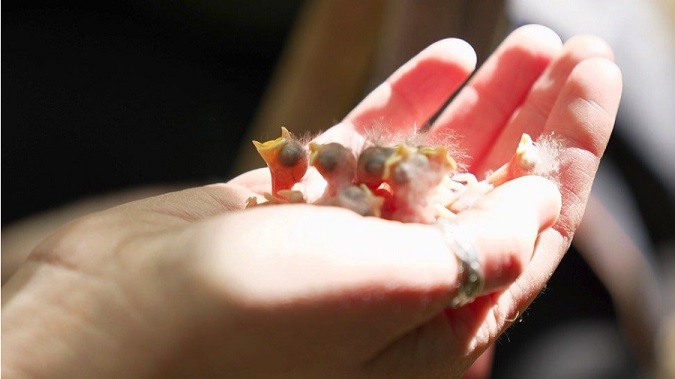
"In some parts of this wood, egg-laying has shifted by three weeks," explains Dr Ella Cole of Oxford University.
The softly-spoken, seasoned ornithologist is showing me around a very special field site - Wytham Woods in Oxfordshire; one of the most studied woodlands in the world.
This year is the 75th anniversary of a study that has tracked 40 generations of great tits in the wood.
It is one of the longest-running animal-tracking studies in the world.
It is precisely because this is a decades-long study that has followed every nestling - marking and counting the birds, recording the exact date that females lay their eggs and the date those eggs hatch - that the data has revealed this trend in the timing of critical seasonal behaviour.
"The tits here are actually managing to track the other members of their food chain," explains Dr Cole. "So, that's the peak in the number of the caterpillars they feed on and in the timing of the oak trees [that the caterpillars] feed on.
"The whole sort of food chain has shifted earlier in the spring."
A 75-year study in numbers:
- *700-800 - the number of nest boxes checked every year
- *10,000 - the number of caterpillars that adults feed to an average clutch of great tit nestlings in the two weeks between hatching and fledging
- *350 - the number of scientific papers produced from the Wytham great tit project.
The site was bequeathed to the University of Oxford by a local family in 1942, specifically for the pursuit of science.
Researchers have certainly lived up to the condition of that bequest. In an area of about 800 acres, there are now about 1,200 specially-built nest boxes, some of which have been there, repeatedly occupied by great tits and blue tits, since the project began in 1947.
There are signs of on-going ecological experiments everywhere - with netted bags hanging off branches to catch caterpillars and seed traps laid out beneath the canopy.
But the longest-running of the Wytham Woods experiments is the great tit project.
These birds are relatively short-lived - with an average life span of just under two years - so 75 years of research has tracked 40 generations. "The human equivalent of that would be studying a family tree back to the 10th Century," Dr Cole explains.
She and her colleagues have special permission to access the nest boxes, to mark each nestling and to ring every bird before it fledges.
The detail and longevity of the study has produced some remarkable insights.
One evolutionary study back in 2017 that compared Wytham's great tits with a population in the Netherlands revealed that UK great tits had evolved longer beaks, which appear to allow them to use bird feeders more efficiently.
"In this country we spend more than twice as much on bird food than the rest of Europe put together, so in some ways it's easy to see how we might be causing evolutionary change," says Dr Cole.
Our changing climate has put a renewed focus on the evidence this project has provided about how the natural world is responding - allowing scientists to put all of the aspects of how a population of wild birds works in the context of climate change.
"We can ask how productivity and survival change over time, as well as behaviours like dispersal and migration," says Prof Ben Sheldon from Oxford University, who currently leads the great tit project.
"We're also able to ask how extreme climatic events - increasingly seen as a risk of climate change - affect the population because the length of the study gives us more chance to observe these."
The study shows no sign of slowing down - a small group of researchers has the task of checking about 800 occupied nest boxes every spring. And each year, the timing of their busiest season becomes a little more unpredictable.

